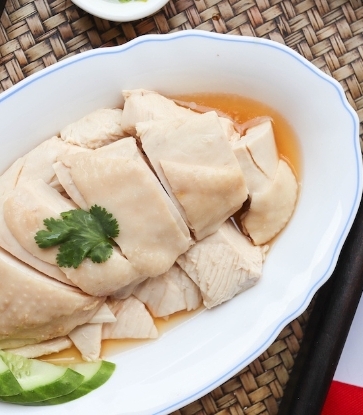Éclairs adorned with tiny lemon gem Marigolds, crab claws topped with tender mustard frills, a sprig of nepitella on Robiola cheesecake.
The rare microgreens and vibrant blossoms that embellish these dishes all share the same unlikely origin: the basement of a loft building in TriBeCa where they are custom-grown for chefs in a hydroponic Garden of Eden called Farm.One, and hand delivered by bicycle or subway to restaurants around the city.
For today’s top toques, garnishes mean more than just a last minute sprig of mint or parsley. Herb and edible flower accents are part of the overall concept of a dish, designed to enhance a sensory profile of color, flavor and texture. And to chefs like Chetan Shetty of Indian Accent, Farm.One “is like having a personal mini farm,” where he can select from hundreds of varieties of micro plants — anise hyssop to za’atar marjoram — to complement his cuisine.
Farm.One was founded in 2016 by Rob Laing, an Australian-born tech entrepreneur who had become intrigued with the potential of “this thing called vertical farming,” plants grown hydroponically indoors under artificial lighting in a water based solution. He created an experimental garden at Manhattan’s Institute of Culinary Education (ICE), where he could learn from chefs and work with students, and figure out a way to deliver bronze fennel leaves or violet nepitella flowers hours after they were picked instead of plants that had been shipped two days earlier from a thousand miles away. As a plant based diner, “My intention right from the beginning,” Laing explains, “was to grow for flavor in a sustainable environment, and to find things that chefs were excited about but couldn’t find locally or year round.”

When one of his clients, two-Michelin-starred Atera on Worth Street, suggested he take over a large unused storage room in their basement, Laing and his team transformed the space into a 1,500-square-foot botanical wonderland, filled floor to ceiling with rows of rolling shelves that house trays of mini plants growing under sun-simulating LED lights. Seedlings are started in spongy peat moss cups that resemble brownies, their roots immersed in recycled water. The temperature is constant; the airflow and humidity, controlled and monitored.
“It’s a perfect summer day year round,” Laing declares, “there are no weather problems.” Also, insecticides are unnecessary because there are no raccoon raiders, no pests — just some benevolent ladybugs brought in to control any mites or aphids.
However, “We are as much a technology [company] as an agricultural company,” says the firm’s plant scientist Caleb Raff, who oversees all aspects of plant growth. There are sensors and cameras to help record yields, databases to keep track of some 600 varieties of seeds and for figuring out when each plant will be ready for harvest — from two to three weeks for leaves, longer for flowers. The system is so precise that a client can specify the exact size of a leaf or the length of a stem.
For Atera, where Danish chef Ronny Emborg is noted for his elegant, sensory-style cuisine, having a farm at home base stimulates creativity. “It is such a luxury to literally walk across the hall and get some freshly trimmed herbs,” says his head chef James Moore. That perk is in addition to a special section reserved for plants the restaurant pre-orders for upcoming menus.
“The farm team,” Moore continues, “is always popping over with samples of new things that they are growing, and the guests love it when we tell them that the herbs and flowers that we are serving in front of them are coming from a farm in the basement.”

Emborg’s constantly evolving 16- to 17-course tasting menu includes dishes like halibut with cauliflower and brown butter that is plated tableside with young pea tendrils and wood sorrel blossoms providing the final touch. “The wood sorrel is high in oxalic acid which gives it a nice acidity in the bite,” observes Atera’s general manager Matthew Abbick.
One course that is a showcase for microgreens consists of a scallop, cut into five slices, each topped with almond butter and apple and a different herb: nasturtium, watercress, lemon verbena, chickweed and pea tendril. “It’s fun to see how each green complements the other ingredients differently,” notes Abbick.
Bill Telepan, executive chef at Oceana, who has also joined the faculty of ICE as the school’s first director of sustainability sees Farm.One from a double perspective. He works with students on the ICE farm, which still serves as an R&D resource for the Laing team, and orders plants like chamomile buds, epazote and the lemony Japanese parsley, mitsuba, for a monthly 14-course tasting menu at the restaurant. He has paired baby borage with mackerel and pickled Mexican gherkins for a cucumber-y flavor; fennel crowns morphed into “sweet little fennel bites” on scallops and where “I needed a bitter green to complement the nettles I used with gnocchi and short ribs, mini kale leaves gave a nice boost of flavor to the dish.”
Uptown chefs don’t have the luxury of proximity to the farm, but chef Shetty hops a subway to Worth Street while composing a menu, working with the farm team to understand the length of time needed for his plants to mature and exploring new options. Among his favorites: nasturtium that gives a slight kick of pepperiness to a rich dish of pork dumplings with pumpkin sauce from Northeastern India and mustard frills that provide a fresh crispy crunch and beautiful green hue to crab claws without overpowering the sweet seafood.
Many Farm.One clients are just too busy to trek downtown so they rely on the firm’s sales manager, Wilson Gibbons, for support and orders. “Some chefs know exactly what they want,” Gibbons acknowledges. “Others are more collaborative, it really depends on the personality of the chef, so I do my best to fill in the blanks.” Aisha Momaney, executive pastry chef at Vaucluse, says, “I always consult with Wilson if I feel a dish will benefit from a pop of color, a little herbaceous quality or a bit of freshness. When I was planning a pear dessert this fall using autumnal spices and cranberries, he came up with samples of candy pop mint, basil and wood sorrel flowers, and I chose the latter.” For a lemony éclair Momaney ordered dime-sized lemon gem marigolds and “gorgeous oxalis flowers for a nice pop of acid on a Concord grape, hazelnut and goat cheese tart.”

The perfect flower right now for Deborah Racicot, pastry chef at Locanda Verde, is an orange violet, “because it’s winter and you’re going to have more gold tones.” She started talking about them with Gibbons this summer so they would be ready in time to add a flourish to a cinnamon tarta with poached persimmons and mascarpone cream. Also on Racicot’s menu is a stone fruit Robiola cheesecake with a basil crust and honey balsamic agridolce, topped with the Italian herb nepitella, a member of the mint family with oregano-like leaves and a woodsy flavor.
Nepitella is also a natural for the Italian menu at the two-starred Marea. Pastry chef Francis Joven uses it to crown mascarpone panna cotta with blueberry mostarda, cashew, prickly pear and brioche. Micro lemon balm is his choice for green apple semifreddo, basil cream, apple gel, Asian pear and white balsamic. “Farm.One is always coming up with something I haven’t seen,” Joven comments, “cinnamon basil, arugula wasabe flowers, cilantro berry flower...”
Joven has high praise for Farm.One products and procedures: “I appreciate their willingness to satisfy our needs, specific count, color, length, etc. They nerd out on herbs and flowers,” enabling New York diners to admire and savor the perfect garnish.
Editor’s Note: While Farm.One does not sell to consumers, they offer tasting tours that can be booked on their website.























